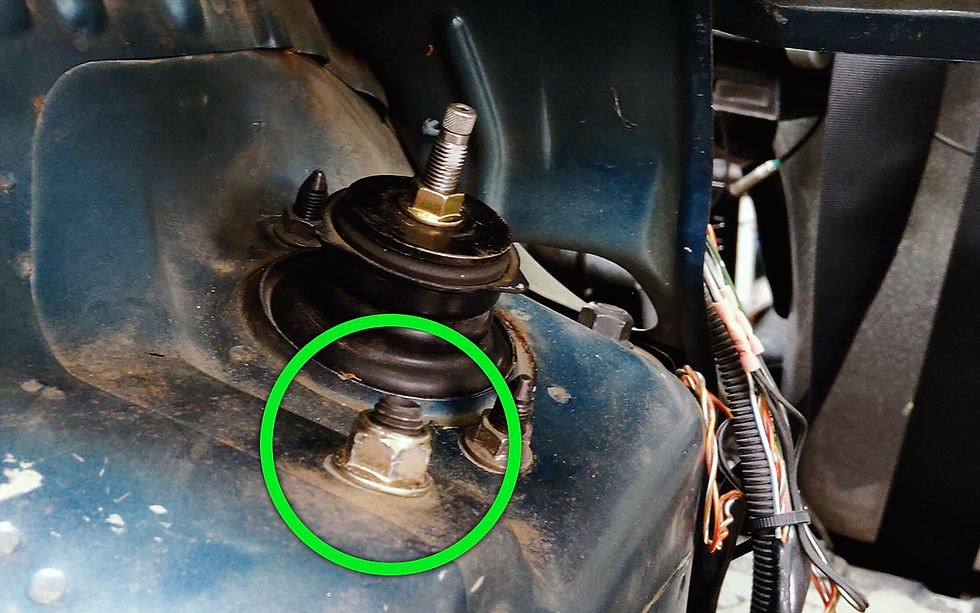Track Car Hack - Get More Grip for $8 (or less)
- Roger Maeda
- Jul 14, 2020
- 3 min read

One of the advantages of double wishbone (double a-arm) suspension designs is that they gain a lot of negative camber when you compress them.
It's a big advantage over the MacPherson strut and Chapman strut designs that are so common in new cars, and is one of the main reasons that 90's era Hondas and Mazdas handle so well. The harder you take corners, the more you compress the suspension system. The more the suspension compresses, the more negative camber you gain on your two outside wheels. The more negative camber you have, the better your chances of keeping the tread parallel to the ground, and the more grip you'll have.
Sure, you can achieve a similar effect by large amounts of static camber, but there is a downside to running too much negative camber: It reduces the size of your contact patch when you are driving the car in a straight line. This can make the car difficult to control under hard braking and can significantly increase braking distances from high speeds. So yes, if you are the proud owner of a car with double wishbone suspension, you should be happy that you have this inherent advantage over your competition. You should also take every opportunity to maximize this advantage so you can beat them even harder.
As it turns out, there is an easy way to enhance this effect to get even more dynamic camber from your double wishbone-equipped car. All you need is a handful of M18 stainless steel washers. They cost about $8 US from your average industrial supply store and are very easy to find:

When you first get the washers, take them out of their packaging and lay them flat on a table for inspection. You want to do a visual check to make sure that none of them are significantly thicker or thinner than the others (more than 0.5mm thicker or thinner than the others). You can measure the washers using calipers or by comparing the thicknesses by eye. 0.5mm doesn't sound like very much, but it's enough of a difference that you can see it with the naked eye.
Once you have a handful of washers that are of consistent thickness, jack up your car, remove the wheels, unbolt the inner pivots of your upper control arms from the chassis, and slip one or two washers on the upper control arm pivots. Then reinstall the control arms and torque down the top nuts according to the spec in the service manual.

Depending on whether you have OEM or aftermarket upper control arm anchors, you may be able to fit more than one washer in this space. Just make sure you leave enough space so that there are at least one or two threads showing above the the top nut after you bolt the control arm back into the chassis.

And that's it. By adding these washers, you lower the pivot point of the upper control arm by 3-6 mm, which increases the rate at which your suspension system gains negative camber as it's compressed.
The amount of dynamic camber you gain will vary depending on your car's suspension geometry and ride height. On our Prelude, this simple modification gave us an additional 0.5 degrees of negative camber when the dampers are compressed 40mm (approx 1.5 inches).
That might not sound like very much, but remember, alignment settings are measured in tenths of a degree. 0.5 degrees can easily be the difference between making full use of your tyres' contact patch (good) and riding on the outside edges of the tread (bad).
The good news is that you can get all added benefit without affecting your car's performance under braking or acceleration. The fact that it only cost you a few dollars is just icing on the cake.
See you at the track.
Disclosure section:
Neither StudioVRM nor Roger Maeda are affiliated with McMaster-Carr, or any industrial supply store for that matter. All hardware was purchased at full price from Roger's own pocket. It's a good thing it was cheap.
